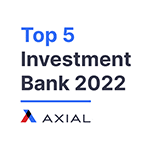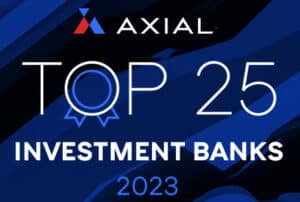1. Know the timeline – After a sale, buyers often expect you to stay on for one to two years as an employee or consultant. If your goal is full retirement by 2030, plan to sell by 2028 or 2029. Missing this detail could complicate or kill the deal, delay your plans, or reduce the sale price.
2. Corporate structure – Whether you’re a C-Corp or S-Corp can affect taxes at sale. C-Corps, for example, might lead to double taxation, which isn’t ideal. A conversation with an attorney well ahead of time can help you prepare.
3. Strong Team Doing Day-to-Day Work – It’s great to be the owner/visionary, but if you’re central to daily operations, you’re a “key-man risk” for the buyer. Can your team manage sales/marketing, supply chain, relationships, and business decisions independently? Can you take three months of vacation a year and the business runs smoothly? For a successful exit, the answer should usually be “Yes.” If not—common in smaller businesses—start these gradual shifts:
- Share customer and vendor relationships with key employees.
- Pass on domain knowledge to team members or document it. You can’t be the “walking encyclopedia” of the company.
- Ease out of driving sales so potential acquirers feel confident in post-exit stability.
- Upskill team members now (both labor and non-labor roles). This derisks the org. chart for the buyer once you leave.
4. Customers
- Concentration: If one customer drives >20% of revenue (or >4% in fields like truck repair), buyers will see a risk. Reducing customer concentration stabilizes revenue, and more importantly, increases transaction value.
- Contracts: Where feasible, contracts reassure buyers about predictable revenue. They’re especially helpful if you have some customer concentration.
- Quality: Low-margin or slow-paying clients can weigh you down. Shifting focus to profitable, reliable customers strengthens cash flow—what buyers ultimately value.
5. Optimize Working Capital (One Year Ahead)
- What It Is: Net Working Capital (NWC) is Current assets minus current liabilities (A/R + Inventory – A/P + Accrued Expenses), excluding cash, which you keep (in a typical cash-free, debt-free transaction).
- Why It Matters: Healthy working capital keeps the business running smoothly day-to-day.
- Owner Perspective: Since the owner keeps the cash at close, the owner could aggressively collect receivables or reduce inventory levels to collect cash at close right before a transaction. Obviously, this doesn’t fly with the buyer three days before close.
- Buyer’s View: The buyer needs to know the normalized level of working capital required to continue to run the business post-close. This target is negotiated and agreed upon, and the investment banking advisor will play a large role here.
- What the Owner Should Do: Twelve months before close, have excess or slow moving inventory trimmed, keep A/R under 30 days, and extend A/P past 30 days if possible. When selling a business, “positive and just enough NWC” is optimal.
- Outcome: Buyers will view the previous twelve months working capital as normalized and sustainable and the owner will maximize cash retained. You can read more here: https://focusbankers.com/how-to-manage-working-capital-in-an-ma-transaction/
6. Supplier Diversification – If one supplier accounts for >40% of your sourcing, buyers become concerned, especially with risks like tariffs in 2025. Aiming for <30% supplier concentration can ease their concerns as margins and stability are very important. Find multiple/backup suppliers and establish those relationships or try to even out the mix of product coming from each supplier.
7. Clean Up the Financials – Five years of clear, consistent books build trust—no formal audit needed, just detail. Have a conversation with your bookkeeper about the below and hold them accountable.
- Clearly break out expenses (insurance broken out by auto, health; salaries broken out by owner, employee; and so on.)
- Consistently book expenses to the appropriate line item.
- Track sales, costs, and expenses by category (e.g., product, service and sales channel). Buyer confidence is gained through visibility.
- Owner and bookkeeper need to keep track of owner expenses that are paid for by the company. These are called ‘addbacks,’ and are extremely important to valuation.
8. Stay Current – Leaning heavily on one product, service, outdated technology or critical piece of equipment is a risk. Proper risk management before a sale means diversifying offerings and updating facilities and equipment ahead of time. Your business will be more attractive to acquirers if it’s current and the operation is well-oiled.
9. Address Legal/Compliance – Lingering issues—taxes, labor rules, or lawsuits—can minimize probability of deal close, extend timelines, lower valuation, etc. Indemnification in the purchase/sale agreement becomes more complex, as the buyer must protect itself from breaches in representations, warranties, or covenants. If issues are present, a seller will have a large portion of the transaction escrowed to cover indemnifications, meaning they may never receive ‘their’ money.
10. Set Fair Market Rent – If you own the property, charge the business a market-rate rent to reflect true profitability. We usually ask the buyer to conduct the appraisal so our clients don’t have to, though doing it early adds transparency (noting market shifts could require another appraisal).
11. Keep Growth Alive – Even after years of continued growth, flat performance prior to and during an exit generally results in a lower valuation. Don’t let off the pedal now—increase prices, add a new product or service, or scale something already in place—to show the business is still thriving. A widespread problem I see in automotive is that more growth requires more employees or more space. Think critically here about how to grow strategically with the least resistance.













